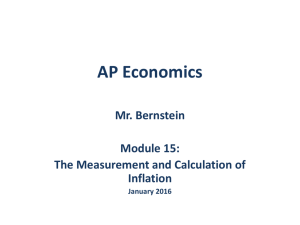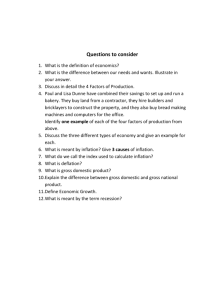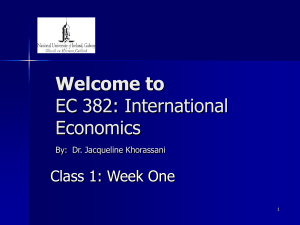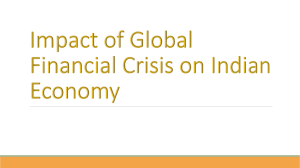Global Business – Chapter 2 Our Global Economy LESSON 2
advertisement
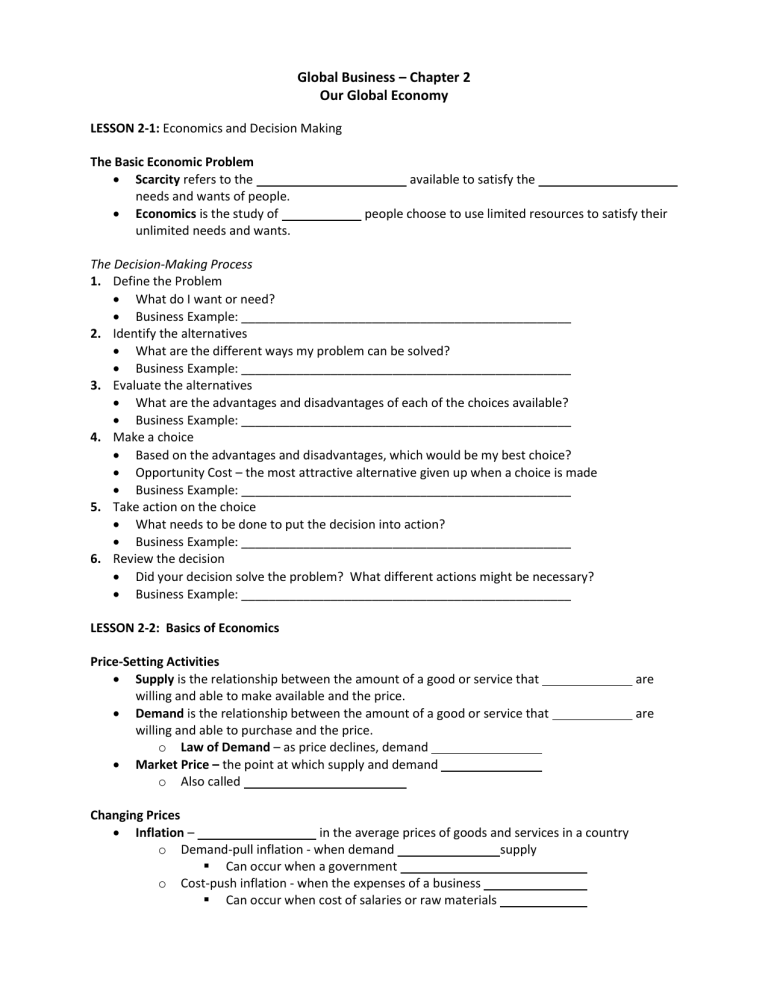
Global Business – Chapter 2 Our Global Economy LESSON 2-1: Economics and Decision Making The Basic Economic Problem Scarcity refers to the limited resources available to satisfy the unlimited needs and wants of people. Economics is the study of how people choose to use limited resources to satisfy their unlimited needs and wants. The Decision-Making Process 1. Define the Problem What do I want or need? Business Example: ________________________________________________ 2. Identify the alternatives What are the different ways my problem can be solved? Business Example: ________________________________________________ 3. Evaluate the alternatives What are the advantages and disadvantages of each of the choices available? Business Example: ________________________________________________ 4. Make a choice Based on the advantages and disadvantages, which would be my best choice? Opportunity Cost – the most attractive alternative given up when a choice is made Business Example: ________________________________________________ 5. Take action on the choice What needs to be done to put the decision into action? Business Example: ________________________________________________ 6. Review the decision Did your decision solve the problem? What different actions might be necessary? Business Example: ________________________________________________ LESSON 2-2: Basics of Economics Price-Setting Activities Supply is the relationship between the amount of a good or service that businesses willing and able to make available and the price. Demand is the relationship between the amount of a good or service that consumers willing and able to purchase and the price. o Law of Demand – as price declines, demand increases Market Price – the point at which supply and demand cross o Also called Equilibrium Price Changing Prices Inflation – an increase in the average prices of goods and services in a country o Demand-pull inflation - when demand exceeds supply Can occur when a government prints too much money o Cost-push inflation - when the expenses of a business increase Can occur when cost of salaries or raw materials go up are are LESSON 2-3: Economic Systems Factors of Production – the 3 types of resources used to produce goods and services Natural Resources Raw materials that come from the earth, from the water, and from the air o Iron ore, gold, silver, agricultural products Also known as land Used in the production of goods and services consumed by individuals, businesses, and governments. Human Resources The people who work to create goods and services Also known as labor While technology has changed or eliminated certain tasks previously performed by people, new types of work are continually being created. Capital Resources Includes buildings, money, equipment, and factories used in the production process Also called capital These items are expensive and are used over several years by business organizations. Economic System The economic choices of a country relate to three basic questions: 1. What goods and services are to be produced? 2. How should the goods and services be produced? 3. For whom should the goods and services be produced? Command Economies Government regulates the amount, distribution, and price of everything produced Government owns the productive resources Any income from these resources is used to help fund government activities Also known as Communism o China, Cuba, Vietnam, Laos, North Korea Market Economies Individual companies and consumers make the decisions about what, how, and for whom items will be produced Also known as Capitalism or Free Enterprise System o United States, Japan, Australia, Canada Is there such a thing as a Perfect Market Economy? _____________________________ 3 Characteristics of Market Economies Private property – individuals have right to buy and sell productive resources and to own business enterprises Profit motive – individuals are inspired by the opportunity to be rewarded for taking business risks and for working hard Free, competitive marketplace – consumers have the power to use their choices to determine what is to be produced and to influence the prices to be charged Mixed Economies Blend between government involvement in business and private ownership Government owns transportation, communications, and major industries Individuals free to engage in other business opportunities and free to make buying choices Also known as Socialism o Sweden, France Privatization – process of changing an industry from public to private ownership LESSON 2-4: Achieving Economic Development True or false? countries with better education systems usually provide more goods and services that are of higher quality for their citizens _____ automated production, distribution, and communication systems allow companies to create and deliver goods, services, and ideas quickly _____ an economy that is largely involved in agriculture does not have the manufacturing base to provide citizens with a large number of high quality products _____ Industrialized or Developed Countries Strong Infrastructure - a nation’s transportation, communication, and utility systems Actively involved in international business and foreign trade Average annual income per person of more than $30,000 o US, Canada, UK, France, Germany, Italy, Japan Less-Developed Countries (LDCs) Little economic wealth May have resources, but no technology to make use of them Weak Infrastructure, poor health care, low literacy rates, low levels of employment skills, uncertain political environments Little to no foreign trade Average annual income per person of less than $1,000 o Bangladesh, Cambodia, Chad, Haiti, Nepal, Niger, and Sudan Developing Countries Evolving from less developed to industrialized Improving educational systems, increasing technology, and expanding industries Also known as Emerging Markets o Argentina, Brazil, Ecuador, India, Kenya, Hungary, Poland, South Africa, Turkey, Thailand, and Vietnam LESSON 2-5: Resources Satisfy Needs The Economics of Foreign Trade Absolute advantage exists when a country can produce a good or service at a lower cost than other countries Usually occurs as a result of the natural resources or raw materials of a country Examples: ________________________________________________________________ Comparative advantage exists when a country can produce a good or service with more efficiency than other countries If advantage exists in more than one area, produce goods with greatest return and buy other goods elsewhere Measuring Economic Progress Measures of Production Gross domestic product (GDP) o Measures the output of goods that a country produces within its borders o Includes items produced with foreign resources Gross national product (GNP) o Measures the total value of all goods and services produced by the resources of a country o GDP plus production on other countries using our resources Per Capita o Refers to an amount per person o Takes total GDP divided by country population Which country has the highest per capita GDP? ___________________________ International Trade Activity Balance of trade – the difference between a country’s exports and imports Trade Surplus – when a country exports (sells) more than it imports (buys) o Country with the highest trade surplus? ________________________________ Trade Deficit – when a country imports (buys) more than it exports (sells) o Country with the highest trade deficit? _________________________________ Foreign exchange rate – the value of one country’s money in relation to the value of the money of another country o How does the US$ compare to the Euro, Rupee, Canadian$? ___________________________________________________________________________ Foreign debt – the amount a country owes to other countries o How much external debt does the US have? ______________________________ Other Economic Measurements Consumer price index (CPI) o How inflation is measured in US o Monthly report that provides price levels for various products and services in different regions of the country Unemployment rate o Number of people not working o When people are not earning an income, they cannot purchase needed goods and services
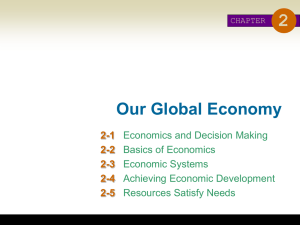

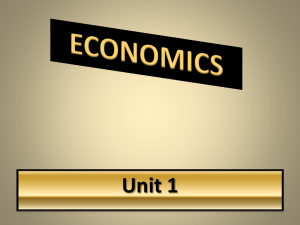

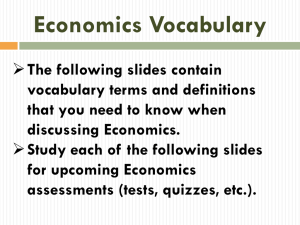
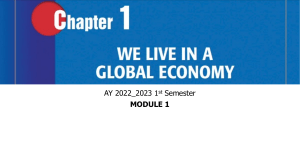

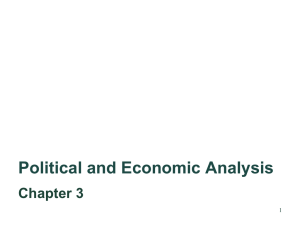

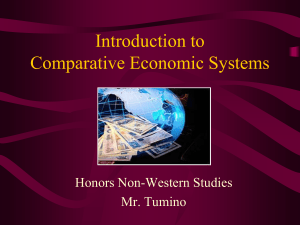
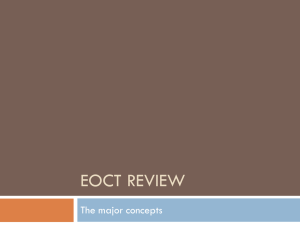
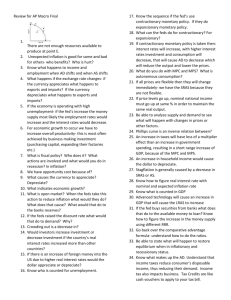
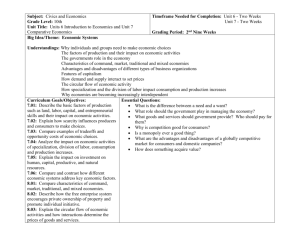
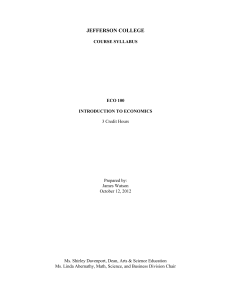
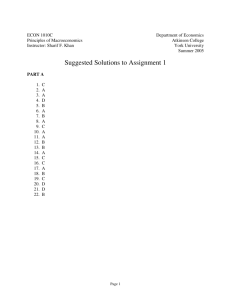

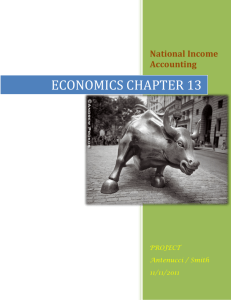
![India[1]](http://s3.studylib.net/store/data/009743360_1-6a6d7e81603c878ec8d55b949a11d191-300x300.png)
